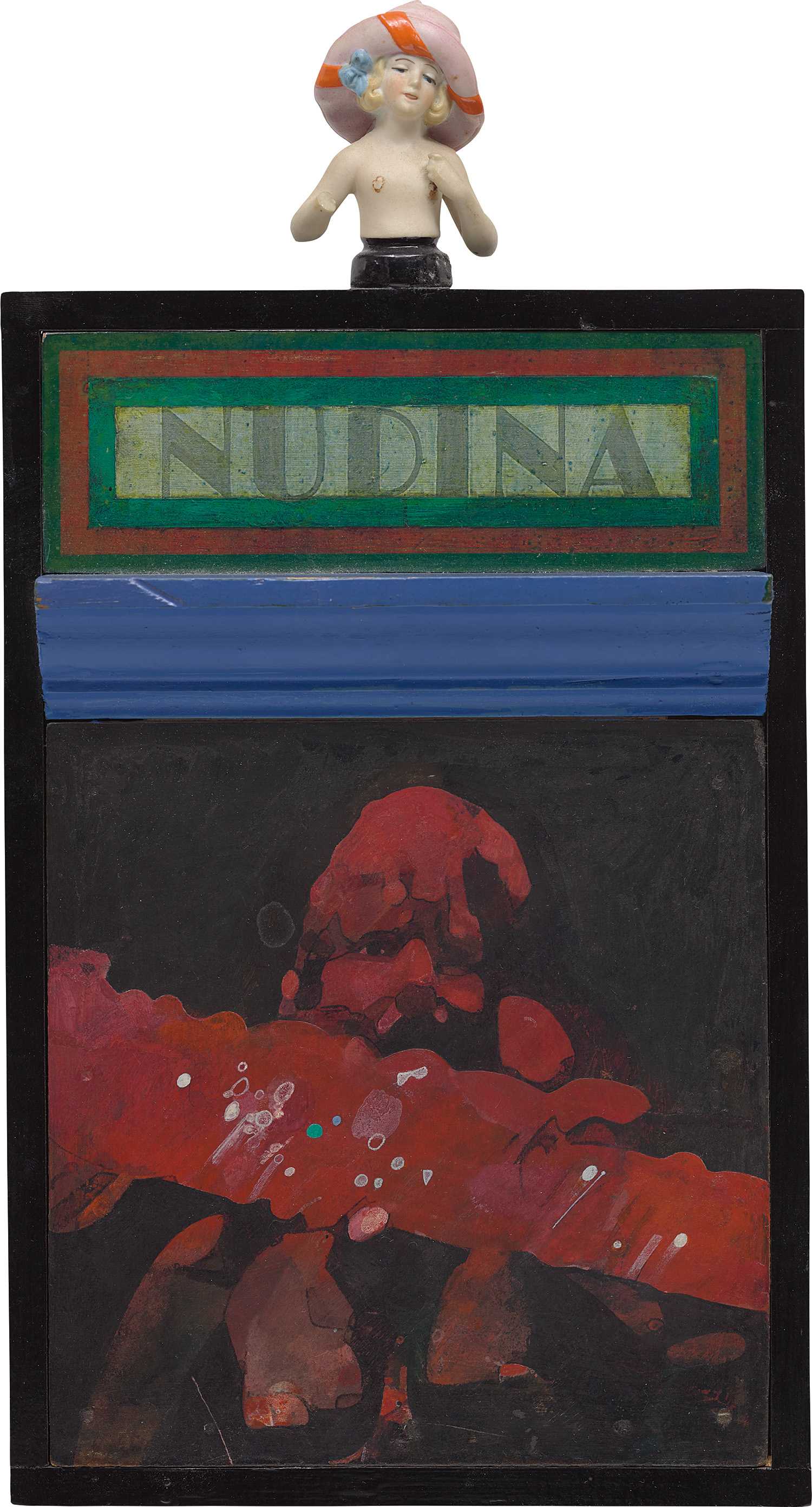

Property of a Private European Collector
19
Sir Peter Blake, R.A.
Nudina
- Estimate
- £60,000 - 80,000♠
£75,600
Lot Details
oil and enamel on Masonite and wood, in artist's frame with attached ornament
signed, titled and dated '“NUDINA." 1961-64 P Blake.' on the reverse
33 x 17.7 cm (12 7/8 x 6 7/8 in.)
Executed in 1961-64.
Specialist